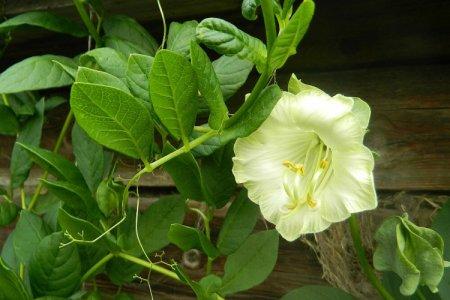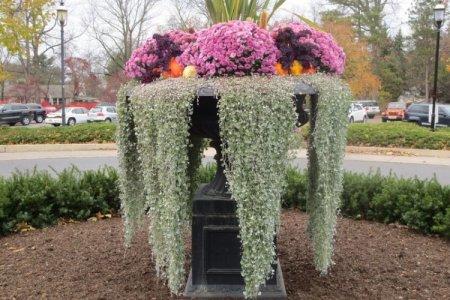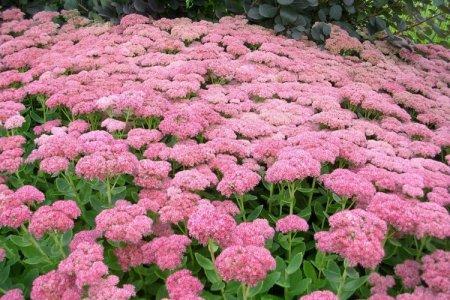
Lovers of yellow flowers are definitely familiar with bidense. In general, its color variations are much more, but it is the golden sunny varieties that are especially popular among gardeners. We will tell you what else this flower is good for and why you need it!
general information
Bidense appeared in ornamental gardening quite recently - a little over 20 years ago. But it has already attracted attention with its bright and abundant flowering, combined with unpretentiousness. In nature, it is common in Mexico, Argentina and Central America.
Biden got its name because of the unusual shape of the seeds - it literally translates as "two-toothed". Interestingly, with the help of these teeth, the seeds cling to the fur of animals, and thus spread throughout the world.
In our latitudes, biden is grown as an annual, and here it received its second name - ferulele succession. The average height of the bushes is 50-80 cm, and the diameter of the yellow flowers is up to 4 cm. The shoots are strong, strong and densely covered with leaves. Biden blooms almost until the end of autumn.

Types of bidense
In culture, mainly one type of bidense is grown - ferulele. And also its garden forms and varieties, which I would like to dwell on in a little more detail!
Bidense Taka Tuka
A spectacular variety with vibrant bicolor petals. Lemon yellow from the center, they turn white towards the tips. The height of the shoots is up to 35 cm.

Bidense Painted Red
Compact variety up to 45 cm high with unusual color of petals. Yellow and red spots are chaotically intertwined with each other, and the honey aroma attracts bees to the garden.

Bidense Golden Ball
A tall species up to 80 cm high with strong branchy shoots. It is easy to guess what the bidense inflorescences called the Golden Ball look like. The diameter of each flower is up to 4 cm.

Bidense Red Stripe
Another original view, on the yellow petals of which a red stripe stretches. Moreover, on cloudy days, it is visible more clearly than on hot and sunny days.

Bidense Pearl White
A spectacular snow-white variety, the flowers of which look even softer against the background of dark green leaves. Pearl White grows as a large ball-shaped bush with a diameter of up to 90 cm.

Bidense care
The main nuance in caring for a bidense is to maintain a comfortable humidity. The soil should always be sufficiently wet, but without stagnant water, because the plant is prone to black stalk and root rot.
Temperature and lighting
A warm, sunny area is a must for bidense. He does not tolerate frost and came to us from warm latitudes. Even in light partial shade, the plant shrubs more slowly and blooms later.

Watering
Biden has a shallow but actively growing horizontal root system. Therefore, it quickly absorbs moisture, and the rest evaporates. Therefore, the biden should be watered frequently, but not too vigorously. And we advise you to mulch the top layer.

The soil
Absolutely any garden soil is suitable, as long as it is loose and moisture-permeable enough. This is necessary to maintain optimal humidity levels. Dilute too heavy soil with peat and sand.

Fertilizers and feeding
Use liquid fertilizer every 2 weeks while watering. Choose formulas for flowering plants based on phosphorus and potassium for bigger and brighter buds.

Pruning
Biden is actively growing and branching, so a neat bush needs to be formed. The main pruning is done before bud formation. And then just prune too elongated side shoots.

Planting and breeding bidense
It is more convenient to grow biden through seedlings, because when planted in open ground, it will bloom much later, even in the southern regions. It is planted in the second half of March in moist, loose soil to a depth of 1.5 cm. Leave a distance between the seeds immediately to avoid traumatic picking.
Cover the seedlings with foil and air every day. The first shoots will appear in 2 weeks. After another 1.5 weeks, you can feed them a little. And add soil as you grow, so that the side roots form.
At the end of May, after hardening, the biden can be transplanted into the garden at a distance of 30 cm from each other. Such bidense grown through seedlings will bloom by mid-June. Biden practically does not reproduce by cuttings.

Pest and disease control
Biden has good immunity and does not attract pests. So there is only one problem - the fungus because of its love for moisture. For prevention, monitor the condition of the soil, regularly inspect the root zones of the bushes and do not thicken the planting. Use fungicides immediately if any suspicious symptoms appear.

Bidense - photo
Biden is good in flower beds, flowerpots, containers and hanging pots. What else is needed for complete happiness?


























